Herbal Remedies

Edzard Ernst’s group at Peninsula Medical School, Universities of Exeter in England has published another study that is critical of one aspect of complementary medicine.
They set out to summarize and evaluate the evidence from randomized clinical trials for the effectiveness of individualized herbal medicine.
They conducted a search of electronic databases and also contacted experts in the field to identify randomized controlled clinical trials of individualized herbal medicine. They then conducted an independent data extraction and assessed the quality of the studies.
They found three randomized clinical trials of individualized herbal medicine. They concluded that statistically non-significant trends favoring herbal remedies over placebo treatment in osteoarthritis of the knee probably resulted from large baseline differences and “regression to the mean.”
They also concluded that individualized treatment was superior to placebo in four of five outcome measures in the treatment of irritable bowel syndrome, but was inferior to standardized herbal treatment in all outcomes.
Finally individualized herbal treatment was no better than placebo in the prevention of chemotherapy-induced toxicity.
The final conclusion was that there is very little evidence regarding the effectiveness of individualized herbal medicine.
Though this result is rather gloomy, it is important not to throw out the baby with the bathwater.
The researchers did the right thing: they asked the experts and examined the published data. Yet every practitioner has seen herbal remedies that seem to help certain specific conditions. So my take on this study is not to abandon herbalism, but to realize that there is a great deal more research to be done.
New Treatment Options: Knowing What to Use
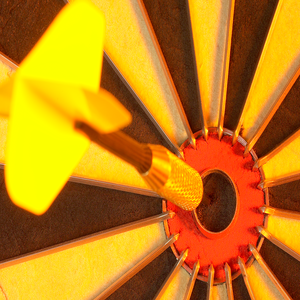
One of the main reasons that I created this blog is that I want to empower you: I want to give to give you the information that you need to care for yourself and the people around you.
One of the problems with many new treatments is that they promise the earth, sometimes drag people away from things that may help them and then fail to deliver.
This is something that I struggled with in the field of holistic medicine for thirty years. I constantly hear and see fantastic claims that cannot be right and are often based on a complete misunderstanding of how the body functions. On the other hand there are some highly unorthodox methods and techniques that can be amazingly helpful. My job has been to find out which is which!
But it is not only in the field of unorthodox medicine. I have recently heard about something very questionable in the field of psychotherapy. Somebody has invented a new form of therapy that cuts across and ignores decades of research. He is now offering certifications in his method. So long as you have a very basic healthcare qualification, you pay him a few hundred dollars, do an online training and then you can set up shop as a therapist. Many members of the public do not know how little regulation there is for some of these therapies.
Here are some guidelines for checking out a new therapy or remedy:
1. Efficacy
Be suspicious of any treatment or therapist if they:
- Claim that a treatment works for everyone: I have yet to find ANY treatment that works for everyone
- Only use case histories or testimonials as proof. The plural of anecdote id not evidence. If we see or hear about something that looks promising, it is essential to confirm the reports with systematic, independent controlled research. Be aware that if that has not been done, the person selling you the treatment or the therapist claiming to help is essentially experimenting on you. And if they want to experiment they need your consent and the approval of an Institutional Review Board. And don’t buy into the “my work is so brilliant and cutting edge that nobody will publish it in a journal.” It is hard to publish really new work, but we cannot believe what people are saying until it has been subjected to peer review: other experts go through the work with a fine toothcomb to see if it is right.
- Cite only one study as proof. Hundreds of promising studies have turned out to be dead ends when someone else tried to repeat it. You can be a lot more confident if several studies have shown the same thing.
- Cites a study that did not have a control (comparison) group. That is always a first step in evaluating a new treatment.
- Cite a study that you cannot see yourself. We spend a lot of time checking some of the claims made on infomercials and websites. They often talk about some obscure study in a hard-to-find journal written in a foreign language. We go and find the papers and if necessary translate them. We constantly find that the studies quoted contain results that are 180 degrees away from what they claim.
- Only reference themselves. This recently came to light with a form of therapy that comes with a short book. There was not one scientific citation, but loads of self-references, so it looked as if there was something credible behind it.
- Testing a treatment without a control group is a necessary first step in investigating a new treatment, but subsequent studies with appropriate control groups are needed to clearly establish the effectiveness of the intervention.
2. Safety?
Be wary if:
- A therapist or someone promoting a remedy cannot tell you the exact consequences of not following up with some other treatment. Safety is not only about the safety of a product or a therapy: it is also about the risks of declining a proven treatment
- A therapist tells you stop any other treatment that you are on without discussing the risks of stopping it, and without discussing the situation with any previous therapist. It does not matter whether you were on a medication or having acupuncture. Different treatments interact, and stopping and starting can be risky. If a therapist who does not prescribe medications tells you stop them, be very, very careful. There are precise ways to discontinue most treatments
- A remedy comes without precise directions about how to use it
- Something does not list its contents or ingredients
- A product has no information or warnings about side effects
- If a product or therapeutic approach is described as natural, with the implication that natural means safe. Hurricanes, arsenic and deadly nightshade are all natural!
3. Promotion
Be very cautious if a therapy or treatment:
- Claims to be based on a secret formula or a secret that has been deliberately hidden from you
- Claims that the particular treatment or therapy is being suppressed or unfairly attacked by the medical or therapeutic communities
- Claims to work immediately and permanently for everyone
- Is described as an “Amazing breakthrough” or a “Miracle.”
- Claims to be a cure for something that other experts believe is incurable. They could be right, but then we have to go back to the first point about efficacy
- Is only promoted through infomercials, self-promoting books, online or by mail order
4. Evaluating Media Reports
- When evaluating reports of health care options, consider the following questions:
- What is the source of the information? Good sources of information include medical schools, government agencies (such as the National Institutes of Health and the National Institute of Mental Health), professional medical associations, and national disorder/disease-specific organizations. Information from studies in reputable, peer-reviewed medical journals is more credible than popular media reports.
- Who is the authority? The affiliations and relevant credentials of “experts” should be provided, though initials behind a name do not always mean that the person is an authority. Reputable medical journals now require researchers to reveal possible conflicts of interest, such as when a researcher conducting a study also owns a company marketing the treatment being studied or has any other potential conflict of interest.
- Who funded the research? It may be important to also know who funded a particular research project.
- Is the finding preliminary or confirmed? Unfortunately, a preliminary finding is often reported in the media as a “breakthrough” result. An “interesting preliminary finding” is a more realistic appraisal of what often appears in headlines as an “exciting new breakthrough.” You should track results over time and seek out the original source, such as a professional scientific publication, to get a fuller understanding of the research findings
5. What Are the Financial Implications of This New Therapy or Remedy?
- Is the treatment covered by health insurance?
- What out-of-pocket financial obligation will you or your family have?
- How long will this out-of-pocket financial obligation be?
- Is there any kind of guarantee?
Tips for Finding Reliable Information Online
The good news is that the Internet is becoming an excellent source of medical information. The bad news is that with its low cost and global entry, the Web is also home to a great deal of unreliable health information.
In addition to the tips cited earlier, Web surfing really needs some special considerations:
Know the source. The domain name tells you the source of information on the Web site, and the last part of the domain name tells you about the source. For example:
.edu = university/educational
.biz/.com = company/commercial
.org = non-profit organization
.gov = government agency
The same rules do not always apply if you are looking at websites in other countries.
Obtain a “second opinion” regarding information on the Web. Pick a key phrase or name and run it through a search engine to find other discussions of the topic or talk to your health care professional.
Experts who spend time and trouble evaluating reports and then publish their findings online will often answer questions. RichardGPettyMD.blogs.com is one that does, and there are many others.
More on Rescue Remedy
My piece about Rescue Remedy has brought in a lot of questions about where to obtain it.
In the United States, Australia and most of Europe consumers can buy it over the counter without a prescription. Most health food stores in the United States have it, and you can order it on line. A bottle is usually in the US$6-10 range, and even in my world, where there is a constant stream of hurt animals, children and adults, the bottle lasts a long time.
I also mentioned Nelsons, who I have relied upon for three decades or more. Nelsons USA is based in Wilmington, Massachusetts is part of the Nelsons group that is still located in London. It was founded in 1860, and Nelsons remains a family-owned business with a longstanding commitment to supplying high quality natural medicines. I have seen their products on sale in at least a dozen countries.
Apart from Rescue™ Remedy, they also manufacture Bach™ Original Flower Remedies, Nelsons Arnicare™, Nelsons Teetha™, and Nelsons™ Homeopathy.
There is a good website: that has more information. It also has a nice online tool for helping you decide on which other Bach Essence may be right for you.
Non-pharmacological and Lifestyle Approaches to Attention-Deficit/Hyperactivity Disorder: 9. Flower Essences

The original flower essences were created by a Welsh physician named Edward Bach. He passed away in 1936 at the age of forty-nine and in many ways he was well ahead of his time. He was a firm believer not only in psychosomatic medicine, but also in the impact of the soul on the body.
He used a combination of scientific knowledge, intuition and clinical practice to find and refine the use of the flower essences. He walked all over Great Britain to find the correct remedies, and prepared them by taking flowers at the peak of their blossoming, and placing them in a bowl of pure water in sunlight. The water then became the raw material from which the remedies were created. Each is bottled, and a small amount of brandy added to “preserve” the remedy, which is then administered, usually diluted in water or fruit juice.
Originally there were 38 “Bach Flower Essences” together with a 39th called Rescue Remedy, which is a combination of five of them.
As time has gone by, new remedies have been created in Europe, the Continental United States, Alaska and Australia. The appearance of these “new” remedies has caused a great deal of controversy amongst traditionalists who believe that there can only be the 38 remedies discovered by Dr. Bach.
Yet people change as they move to new regions of the earth, and it is to be expected that new remedies will be waiting for them wherever they go.
Before I came to the United States I was a dyed-in-the-wool Bach Remedies person. Although I had been using them for two decades, I soon realized that people in North America often needed a different approach, and within months of my arrival I started to try the remedies created in North America with great success. (Over on the left hand side of this blog you will find some suppliers of the remedies).
So what is the evidence that flower essences are of any value in treating ADHD? There is the evidence of case reports, but precious little in the way of controlled studies. A study from Israel failed to show any benefit in 44 children with ADHD treated with Bach Flower Essences.
However, there are experts throughout the world who continue to use them for ADHD and who claim good rates of success. They aim to treat not only the attentional symptom, but also the whole person. So in deciding on a remedy they look at all the associated symptoms. I give some examples of what they look for below.
These are the main English and American remedies that have been found in practice to help some people with ADHD. Some practitioners use them in place of medications, but it is difficult to be comfortable to do that, given the problems that can occur when young people or adults have ADHD and are left untreated.
Agrimony: The child who might be helped by this remedy looks cheerful and easy going but is often filled with inner torment. The child may have great difficulty in reading if he is in a group
Aspen: These people are anxious, apprehensive and tremulous. Their fears and anxieties have no readily apparent cause. They tend to be overly receptive to the emotions of other people. They can become very worried about the unknown, fearing that there are some dark forces that will engulf them. These people often engage in magical thinking, and the fear make them feel “paranoid.”
California Wild Rose: Children who might benefit from this tend to have low vitality, poor appetite and a lack of interest in food
Calendula: People who might benefit are typically argumentative poor listeners who have communication problems in relationships. They tend to have a lot of difficulty in receiving and acting on what others are saying
Chamomile: These children tend to be contrary, fussy and agitated. They often suffer from tension in the stomach area with related digestive disturbances. They usually have continuous emotional tension that interferes with learning and concentration
Chestnut Bud: These children often lag behind others, have difficulty with learning, repeat mistakes and have difficulty focusing on and retaining what they study
Chicory: These children demand a lot of attention because of their negative behavior. They may have temper tantrums, be overly fussy and easily get irritated if they do not get the attention that thy want. Then they tend to cling or feel sorry for themselves
Clematis: These children are daydreamers who escapes from the present by fantasizing about the future
Cosmos: These children and some adults have overly active minds that are flooded by too many ideas at once. They get so overwhelmed that they are unable to focus. This becomes very obvious when they try to think and talk at the same time. They feel overwhelmed by the overwhelming amount of information and find it hard to be articulate
Dill: These children are easily overwhelmed by new projects or when life moves too fast for them. They can feel also be overwhelmed by change
Elm: This is another remedy for people who easily feel overwhelmed. Not only do they have the feelings of being overwhelmed, they also feel over-extended and isolated
Filaree: These children get lost in details and worries. The find it very difficult to see a lose broad perspective, so they over-focus on details and can when they are be overcome by anxieties about them
Gentian: These children are not good at persevering with a project and easily get discourage. If they encounter some setback or difficulty, they find it difficult to bounce back. Gentian helps overcome discouragement after rejection or failure and makes it easier for them to get on with life without ruminating over the problem
Golden Yarrow: People who may benefit from this typically have performance anxiety. The essence may instill confidence and enable them to perform at their best
Goldenrod: These children are unsure of their own values and beliefs, so that group and family ties may easily influence them. They may become overly reliant on social approval and vulnerable to peer pressure and social expectations. Some create barriers between themselves and others by anti-social or obnoxious behavior
Holly: The child who might benefit from Holly tends to be jealous, envious and to have sibling rivalry. They tend to see any change or disruption as a threat. They are very sensitive to minor occurrences that most other people would not even notice. They may be angry, agitated, aggressive and intolerant. They are often quick to perceive others as threatening and are easily influenced
Impatiens: This can often be very helpful for children who are restless and impulsive and who eat too quickly. They often become easily frustrated and can be impatient, angry and intolerant with fiery temperaments. Some children – and adults – who might benefit form Impatiens may even become abusive or violent
Indian Pink: This is especially valuable for children with have attentional problems and are living in disorganized homes. The disorganization in their environments may make them nervous and they may have particular difficulties in staying calm and focused in the midst of emotionally intense and turbulent times. The remedy can help them focus and feel more grounded, calm and self-disciplined
Iris: People with ADHD who feel frustrated that they cannot express their creativity. Instead of being creative they feel weighed down by ordinariness of the world, which seems dull, colorless and uninteresting. They are usually hyperactive, and may easily become hypoglycemic and to crave candy and other sweets
Larch: For people who may benefit form this remedy, their symptoms stem from crushing doubt about themselves and their abilities. This lack of self-confidence comes out in many ways. They fear being ridiculed by other people, they are anxious and have a fear of failure. The lack of confidence may make them bad procrastinators and give them an “inferiority complex.” If this is the right remedy, it can help instill confidence in self-expression or performing in public
Lavender: People who might benefit form Lavender are typically nervous and high strung. They are very sensitive to sensation, not only from the five senses but also form spiritual influences. They tend to be light sleepers with very active minds and a strong attraction to spiritual practices. The tension in them often comes out in the neck and shoulders, as well as headaches and visual problems
Madia: These people are easily distracted, unable to focus, have scattered thinking and an inability to manage details. They are often dull and listless and can easily become “spacey.” They often have a great fear of public speaking. For the right person Madia enhances the ability to focus and concentrate and to be precise in his or her thinking
Mallow: These people not only have problems with attention, they also find it difficult to make and maintain social contacts and friendships. Their social insecurity and fear of reaching out to others means that they often suffer from feelings of isolation and abandonment. The remedy may help them become more accepting and to develop self-esteem, warmth and trust
Mariposa Lily: These children often feel alienated from their mother. In adults with attentional problems this remedy may be helpful in the healing of childhood traumas, including abandonment and abuse
Mimulus: These children are shy and have a lot of fears and phobias about concrete fearful events, objects, or people. They may have a fear of heights, flying, illness, dentists or almost anything else. This constant dread, worry and fear makes it hard for them to face the challenges of daily life. These children are often physically sensitive, shy and introverted, though they may talk a lot or puff themselves up to hide their fear
Morning Glory: These people tend to be dull and constantly toxic, especially in the mornings. Some engage in addictive behavior, have irregular habits and an erratic lifestyle typify. These are the children who crave junk food and stimulants, engage in late-night bingeing and suffer from nervous problems. Many of them have attachment problems during development and they often grind their teeth at night
Peppermint: These children can be dull and sluggish as a result of metabolic imbalances that leave them feeling sleepy they have eaten. They have difficulty maintaining mental attention and difficulty using and focusing their mental abilities. For the right child, the remedy can make them mindful and it promotes mental clarity and alertness
Pine: These children tend to be introverted, conscientious, self-critical, filled with guilt and always hard on themselves. They set unrealistically high standards for themselves and may become perfectionist or even obsessive about doing things correctly. They take on responsibility for the mistakes of others
Pink Monkeyflower: These are usually highly sensitive people who have groundless feelings of guilt, shame or unworthiness. These feelings together with a sense of vulnerability, makes them afraid of being hurt and they create barriers between themselves and the world outside. They want to hide and avoid attention. They have difficulty expressing their true feelings, which they hold deep inside
Poison Oak: These children are hypersensitive and fearful. The often come across as irritable, impatient and hostile, but it is a defense against their inner vulnerability. They are often afraid of contact with others and protective of their personal boundaries. They tend to be distant and to have difficulty in forming relationships
Quaking Grass: These children tend to have a lot of trouble in social settings. They find it difficult to listen and communicate, mainly because they find it difficult to filter out sensory impressions and find it difficult t strike a balance between their own sense of Self and the demands of a group
Rabbitbrush: These people are easily confused and overwhelmed by too many details or too much going on at once. They have trouble multitasking and need to be more alert, mentally adaptable and able to synthesize and incorporate their experiences
Rescue Remedy (Five-Flower Remedy): This combination remedy may help with acute anxiety, crisis, panic or trauma, when both the child and the situation seem totally out of control. So it is often useful during extreme stress. (Regular readers will recall the recent study about the use of Rescue remedy in acute anxiety)
Rosemary: These people tend to be forgetful and lack physical and emotional warmth. They are often prone to hypoglycemia. It often helps give them more vitality, particularly in children who are sleepy or forgetful during the day. It is a classic remedy for poor memory, and it may help people with a sluggish digestion
Shasta Daisy: This remedy promotes awareness, concentration and insight. It often helps people who over-intellectualize but have scattered thoughts. It may enhance mental clarity, especially for people who are unable to put the pieces together into a cohesive whole
Shooting Star: These people have a profound feeling of alienation, especially not feeling at home on Earth. As children they often talk about space and other planets. They may be ambivalent and apathetic
Snapdragon: Children who might benefit from Snapdragon tend to get irritated, hostile and aggressive if they feel challenged or attacked. They are angry and argumentative when communicating with others. These children may even be verbally abuse and make derogatory comments. Some may even bite!
Vine: These people are often bullies who always have to be in control of the situation and will put their own wishes before those of others
Yarrow: These people are extremely vulnerable to other people and to the environment. They are easily depleted and are overly absorbent of negative influences. They can get real “people poisoning” or psychic toxicity if they are around a lot of people.
Flower Essence Society Pink Yarrow: This one can often be helpful for people who have a tendency to absorb the emotions of others
Deciding on the correct essence to use is a matter of clinical experience and taking a very careful history that looks at the physical, psychological, social, subtle and spiritual dimensions of the individual.
The essences are not known to have any side effects, and they may help in selected individuals despite the lack of any objective data to support their use.
“The earth laughs in flower.”
–William Blake (English Poet, Painter and Mystic, 1757-1827)
“Flowers are words which even a baby can understand.”
–Arthur C. Coxe (American Bishop, Poet and Writer, 1818-1896)
“Flowers are the sweetest things God ever made and forgot to put a soul into.”
–Henry Ward Beecher (American Congregational Minister and Writer, 1813-1887)
Non-pharmacological and Lifestyle Approaches to Attention-Deficit/Hyperactivity Disorder: 8. Massage and Manipulation
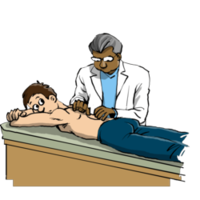
There is a small but persuasive literature on the value of massage and manipulation in people with attention-deficit hyperactivity disorder (ADHD).
Massage
The first study involved 28 adolescents with ADHD who were given either massage therapy or relaxation therapy for 10 consecutive school days. The massage therapy group, but not the relaxation therapy group, rated themselves as happier and observers rated them as fidgeting less following the sessions. After the 2-week period, their teachers reported more time on task and assigned them lower hyperactivity scores based on classroom behavior.
The second study was a randomized controlled trial involving 30 students aged 7-18 years. The results indicated that therapeutic massage given for 20 minutes twice a week produced significant improvements in both classroom behavior and mood.
There are a large number of studies that have shown that massage therapy can be helpful in managing anxiety in many different situations (1. 2.)
And it may also have some beneficial effects on the immune system.
Manipulation
There has been a great deal of interest in the notion that chiropractic manipulation may have an impact on the symptoms of ADHD.
A small study of seven children diagnosed with ADHD showed some improvements in ratings of hyperactivity.
There are some interesting case reports:
In the first a young girl who had been diagnosed with ADHD whose symptoms had failed to respond to an astonishing array of medications, but who improved once a cervical kyphosis was treated.
The second concerned a nine-year-old with Tourette’s and ADHD who showed a remarkable improvement after a course of chiropractic treatment.
The third concerned an 8-year-old with multiple learning and behavioral disorders associated with ADHD that improved after a course of chiropractic treatment. This case was rather different form the others in that the symptoms began after a fall, and it seems likely that the problems were at least in part due to pain and discomfort, and the child’s improvement may have been related to an improvement in both. The case highlights the importance of remembering that problems with mood, sleep and attention may be secondary to other medical or psychological maladies.
A recent review article on chiropractic care in people with learning disabilities and dyslexia does touch on ADHD and rightly concludes that the evidence so far is interesting but far from conclusive.
There is clearly a great deal of scope for further research into massage and manipulative therapies and ADHD.
I shall keep you posted if any more studies come out.
I am indebted to Dennis da Ponte from Life University in Atlanta for helping track down some of the papers that I referred to in this article.
Meditation for the Failing Heart
There is a remarkable study in the current issue of the journal Ethnicity and Disease that seems to show that Transcendental Meditation significantly decreases the severity of congestive heart failure.
Researchers from the University of Pennsylvania evaluated 23 African American men and women with an average age of 64 years, who had recently been hospitalized with New York Heart Association Functional Class II or III congestive heart failure. Participants were randomized to either the Transcendental Meditation (TM) technique or health education, in addition to usual medical care.
The investigators used a standard battery of tests to measure changes in heart function with a six-minute walk test, and scales to evaluate quality of life, depression, and re-hospitalizations. They analyzed changes in outcomes from baseline to three and six months after treatment.
The TM group improved significantly on the six-minute walk test after both three and six months of TM practice compared with the control group. The TM group also showed improvements in quality of life measurements, depression, and they had fewer re-hospitalizations.
Congestive heart failure is a serious illness carrying a very significant morbidity and mortality. According to the American Heart Association, congestive heart failure accounts for more than 2.5 million hospital admissions per year in the U.S. Each year, nearly 500,000 new patients are diagnosed with congestive heart failure – and 300,000 patients die annually from this disease. Despite advances in treatment, the number of deaths from congestive heart failure increased steadily over the past decade.
African Americans have twice the mortality rates from congestive heart failure as white Americans.
It is most likely that TM improves the functioning of the heart by reducing the stress associated activation of the sympathetic nervous system that is known to contribute to the failing heart.
The study was sponsored by the National Institutes of Health – National Center for Complementary and Alternative Medicine (NIH-NCCAM) in a collaboration between the University of Pennsylvania with the Institute for Natural Medicine and Prevention at Maharishi University of Management.
“Meditation is the tongue of the soul and the language of our spirit.”
–Jeremy Taylor (English Anglican Clergyman, Writer and Bishop, 1613-1667)
"The purpose of meditation is not enlightenment, it is to pay attention even at extraordinary times, to be of the present, nothing-but-in-the-present, to bear this mindfulness of now into each event of ordinary life.”
–Peter Matthiessen (American Naturalist and Writer, 1927-)
Communicating About Complementary and Alternative Medicine
Two of the key points about Integrated Medicine are transparency and integration of different approaches.
It is true to say that all healing is ultimately self-healing, but at the heart of healing lies relationship: how we communicate with every part of ourselves, with other people and with our health care providers. At the most mundane level, there is published data that if a health care provider has a good relationship with the person coming to them for help, the chance that the person will follow through on a treatment plan is four times higher than if they meet a health care provider who just grunts at them.
There is also a magic that can happen in strong, dynamic relationships based on partnership rather than dominance: one of the themes of Healing, Meaning and Purpose.
It worried, but did not surprise me to see a study released today.
Most Americans age 50 and older use complementary and alternative medicine (CAM), such as supplements, herbal products or acupuncture. The trouble is that – according to a survey conducted by AARP and the National Center for Complementary and Alternative Medicine – they often do not tell their doctors or nurses.
It is very much in person’s best interests to tell their doctor about the CAMs that they are taking because some unorthodox medicines may interfere with over-the-counter medications, prescription drugs, or other conventional medical approaches. See here for an example of some herbal remedies and supplements that may interact with psychotropic medicines.
As the report says, "Communication between patients and physicians about CAM and conventional therapies is vital to ensuring safe, integrated use of all health care approaches."
It goes on to say something that we have been preaching for years: an open dialog "allows patients and physicians the opportunity to identify CAM practices that might be beneficial and also minimizes risks to a patient from potential therapy interactions."
Among a total of 1,559 individuals age 50 and older surveyed in the spring of 2006, 63 percent reported having used one or more CAM therapies.
According to the survey – which can be found here – people between the ages of 50 and 59 are the most likely to report CAM use.
Forty-five percent of CAM enthusiasts used massage therapy, chiropractic manipulation or other bodywork; 42 percent used herbal or dietary supplements; 15 percent used mind/body practices, including hypnosis and meditation; 14 percent used naturopathy, acupuncture, or homeopathy; and 10 percent had tried energy therapies.
Sixty-six percent of CAM users said they did so to treat a specific health problem; 65 percent for overall wellness; 45 percent to supplement conventional medicine; and 42 percent to prevent illness.
Sixty-nine percent of those who reported using CAM had not discussed it with a doctor.
The intersting qustion is, "Why?"
Forty-two percent said because their doctor never asked; 30 percent said they did not know they should; 19 percent felt there was not enough time during the office visit; 17 percent didn’t think the doctor would know about the topic; and 12 percent thought the doctor would be dismissive or tell them not to use CAM.
Women were more likely than men to have discussed CAM use with their doctor (26 percent vs 16 percent) and those younger than age 65 were more likely to discuss CAM use than were older individuals.
The report concludes that "patients need to mention CAM use to their physicians and physicians need to ask about it."
Spicy Foods as Cancer Killers
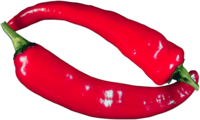
Several news services have picked up a very important piece of research in the February 16th issue of the journal Biochemical and Biophysical Research Communications.
In a nutshell, they have shown that capsaicin, an ingredient of jalapeno peppers, triggers cancer cell death by attacking mitochondria, the energy producing organelles in the cell. Some of the reports were a little confused and confusing and also missed out some critical pieces.
So first, a bit of revision, this is a graphical representation of what a mitochondrion looks like:
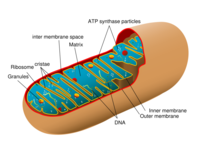
The mitochondrion is the primary producer of energy in the cell, converting molecules derived from food or stores into adenosine triphosphate (ATP) and several other less important molecules. ATP is the energy “currency” throughout the body. In recent years we have discovered that there are a number of diseases that are a result of faulty mitochondrial metabolism.
One of the biggest problems about most forms of chemotherapy for cancer is that the treatments often damage normal cells as well as the malignant ones. Therefore a great deal of research has aimed at identifying differences between normal and malignant cells.
Over the last ten years, increasing evidence has shown that mitochondrial dysfunction is a key feature of many types of cancer as well as part of normal aging. This has lead to the idea that we might have a new therapeutic target if cancer cell mitochondria are different from those in normal cells.
This new study showed that the family of molecules to which capsaicin belongs, the vanilloids, bind to proteins in the cancer cell mitochondria to trigger apoptosis – programmed cell death – without harming surrounding healthy cells. Capsaicin was tested on cultures of human lung and pancreatic cancer cells.
As the lead researcher Timothy Bates has said, “We believe that we have in effect discovered a fundamental ‘Achilles heel‘ for all cancers.”
This is extraordinarily interesting, not least because capsaicin is already in use for the topical treatment of peripheral neuropathy and some inflammatory conditions of the skin including psoriasis. The amount of capsaicin used in the experiments was similar to amounts that could probably be ingested safely. So now the next step if to see whether these observations can be translated into a viable treatment option for cancer, and if so, which types.
What the research does not say is that eating a lot of spicy food will help prevent or treat cancer.
The reports that I have seen have failed to mention that one of the reasons for doing this research was that some spices have been used in traditional Chinese and Indian medicine for many centuries for the treatment of several conditions, and some of the investigators are engaged in the Nottingham UK–China Collaboration on Complementary and Alternative Medicine.
How many more treasures are waiting for us in the archives of traditional medicine?
And how many have already been lost as plant and animal species become extinct?
Eye Color
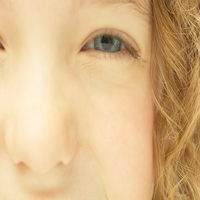
“The eye is the jewel of the body.”
–Henry David Thoreau (American Essayist and Philosopher, 1817-1862)
In November we had a look at new data suggesting that eye color may have developed as a kind of “instant paternity test.”
Now scientists in Brisbane, Australia are reporting that they have uncovered the genetics of eye color, and that they are surprisingly simple. Which is just what we would expect if something were biologically important.
The research is published in the current issue of the American Journal of Human Genetics.
After studying 3,839 individuals, it turns out that of the six billion or so “letters” that make up the human genetic code, a handful of “single nucleotide polymorphisms” (SNPs – pronounced “snips”) are largely responsible for the color of your eyes. These SNPs consist of a change in just one “letter” in the genetic sequence. All the SNPs are located near a gene called OCA2. This gene produces a protein that helps give hair, skin and eyes their color. And mutations in OCA2 cause the most common type of albinism. So these gene mutations modify the amount of pigment in the iris: people with brown eyes have more pigment than people with blue. The odd one out is people with green eyes. In them the changes in the genes seems to have produced a functional change in the pigmentation protein itself.
This is interesting for another reason. There are a small number of medicines and clinical conditions that are associated with changes in the color of the iris. But I have also seen some people whose eye color has changed very rapidly in response to changes in mood, attention or concentration. I have also sometimes seen it happen when people have achieved some altered state of consciousness through prayer or meditation. Yet there is hardly any scientific research into this odd but uncommon phenomenon.
I did find two studies from Korea that attempted to associate a gene for angiotensin converting enzyme and the apolipoprotein e gene with iris type. The trouble with these studies was that they were very small and started with the assumption that iridology could be used to diagnose a physical problem, even though the research (1. 2. 3. 4.) has shown that it cannot.
I had assumed that these rapid changes in eye color had something to do with changes in blood flow in the eye, and that does remain the most likely explanation. But the question now is whether the SNPs associated with eye color are themselves modulated by mood, cognition or spiritual insight.
If you have ever observed changes in iris color in yourself or other people, I would be very interested to hear from you.
“All our souls are written in our eyes.”
–Edmund Rostand (French Poet, 1868-1918)







